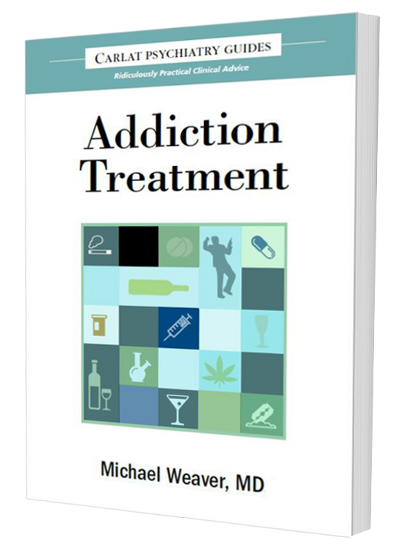 No, that's not Carlat getting nasty and personal again. Those are the words of one of the most well-recognized names in American psychiatry, an academic of impeccable credentials who is involved in the industry-CME charade and is getting sick of it (insert the letters "r" and "a" to complete the headline--the spelled-out version was offensive to some). He will remain anonymous.
No, that's not Carlat getting nasty and personal again. Those are the words of one of the most well-recognized names in American psychiatry, an academic of impeccable credentials who is involved in the industry-CME charade and is getting sick of it (insert the letters "r" and "a" to complete the headline--the spelled-out version was offensive to some). He will remain anonymous.Why is he saying such terrible things about CNS Spectrums? He is referring to one of the most corrupt CME activities to hit the stands in a long time, and believe me, it takes a lot to impress this reporter.
The article in question can be found in the May 2007 Supplement to CNS Spectrums, entitled, “Antidepressant Drug-Drug Interactions: Clinical Relevance and Risk Management,” (Nemeroff CB, Preskorn SH, DeVane LC, CNS Spect 12:5 (Suppl 7) May 2007).
According to my source, this sham article was originally a televised roundtable which was adapted by medical writers to form the basis for an industry-supported supplement. The CME company in question is i3 CME, which, my source said, wrote a "ridiculous text...parts of it were inaccurate, simplistic, and had overgeneralizations."
And yet, it was published anyway, and is accredited by the ACCME for 1 hour of Category 1 PRA credit.
The details of the science are a bit murky. But the short version is the Bristol-Myers Squibb, maker of the newly approved antidepressant EMSAM (transdermal selegiline patch), commissioned the article to convince doctors that EMSAM is safe to prescribe, even though it is an MAOI, which can produce fatal interactions with other drugs and with certain foods containing the amino acid tyramine. In order to deflect attention from this liability, the article dwells primarily on a drug-drug interaction in which EMSAM is safe: interactions involving the liver's P-450 enzyme system. Indeed, EMSAM neither inhibits nor induces these enzymes, meaning that it won't affect the levels of other medications that are metabolized in the liver.
Of course, this is an "advantage" only if drug-drug interactions are problematic for other antidepressants. The article works hard to make the case that two SSRIs, Prozac (fluoxetine) and Paxil (paroxetine), are dangerous medications because of drug-drug interactions: "To put these numbers in perspective, fluoxetine and paroxetine at 20 mg/day produce approximately a 500% increase in the AUC of CYP2D6 dependent drugs" (see page 6).
But this opinion directly contradicts what one of the authors recently wrote in a non-commercially funded article published in the journal Neuropsychopharmacology, at that time edited by Dr. Nemeroff, who happens to be the first author of the CNS Spectrums piece. According to my source, Dr. Nemeroff spearheaded this CNS Spectrums EMSAM advertisement "for the sake of selling CME time."
At any rate, in that earlier unfunded article, Dr. DeVane, the third author of the CNS Spectrums piece, wrote: "Dr. Preskorn and Dr. Werder's commentary is confusing because it frequently fails to distinguish between verifiable statements and personal opinion, includes dubious extrapolations of data (eg 'lowest effective dose of fluoxetine and paroxetine produces approximately a 500% increase in the plasma concentration of co-prescribed [CYP2D6] drugs')" (Neuropsychopharmacology 31:1594-1604, 2006).
With a sprinkling of industry money, an opinion that was once a "dubious extrapolation of data" becomes a fact. While I'm no fan of industry-funded CME, in this case there was a silver lining: old foes (Dr. DeVane and Dr. Preskorn) were reunited.
By the way, I have nothing against EMSAM, but I rarely prescribe it because most patients don't want to have to hassle with wearing a patch. Generally, if I want to prescribe an MAOI, I'll prescribe oral Parnate or Nardil.
In the CNS Spectrums parallel universe, however, patients appear to be yearning for a patch. The article ends with the following promotional comment by Dr. Nemeroff: “I have had more and more patients say to me, “I really think that I would like to try selegiline transdermal system. I do not like taking pills.”
Carlat Blog Verdict: CNS Spectrums: The very definition of a "throwaway" journal.


 Subscribe to our RSS Feed!
Subscribe to our RSS Feed!

3 comments:
Dr. Nemeroff involved in something nefarious? No! ENSAM, of course, isn't all that effective at the starting dose. So they traded tolerability for efficacy. Frankly, there hasn't been much novelty in the antidepressant market since prozac. I think even the SSNRI's are overplayed.
Keep up the good work!
Actually, the ACCME does not accredit any courses. They accredit CME-granting institutions, organizations, companies, etc. who in turn award CME credits to participants.
I've been on the Emsam 6-mg patch for about 9 months, and although it has not "cured" my depression, it has worked far better than any other anti-depressant I have tried in the past 10 years. Occasionally I get slight headaches, but that side effect is insignificant compared with my experiences on other medications, and I do not have any dietary restrictions like the pill-version of this drug. And for whatever reason, I find it easier to put on a patch each morning than to take a pill
Emsam's not a miracle drug, but it has really made a difference for me. It is a shame you are not more open to trying all options that might help your patients.
The main drawback for Emsam is its prohibitive cost, which meant I initially was not able afford it until I obtained health insurance with unlimited prescription coverage.
Post a Comment